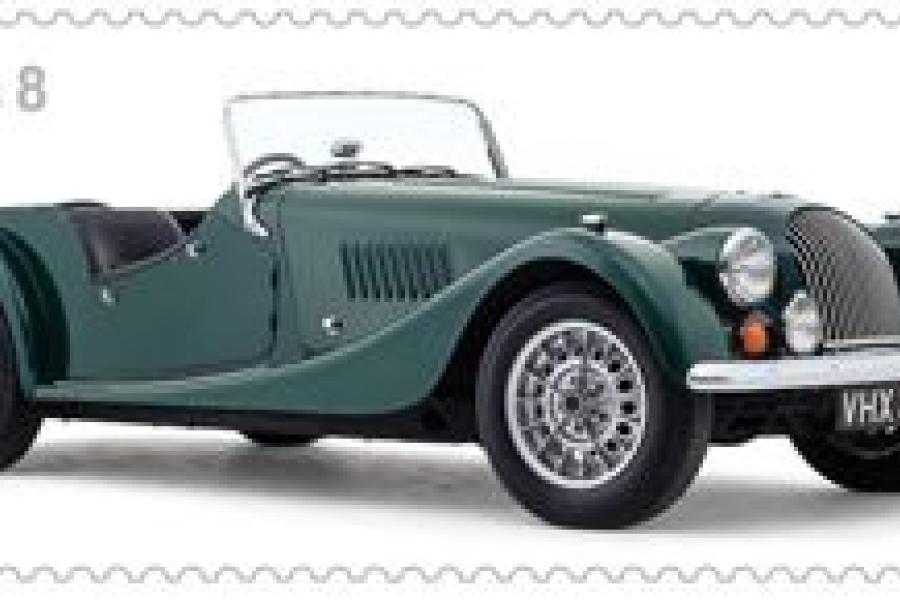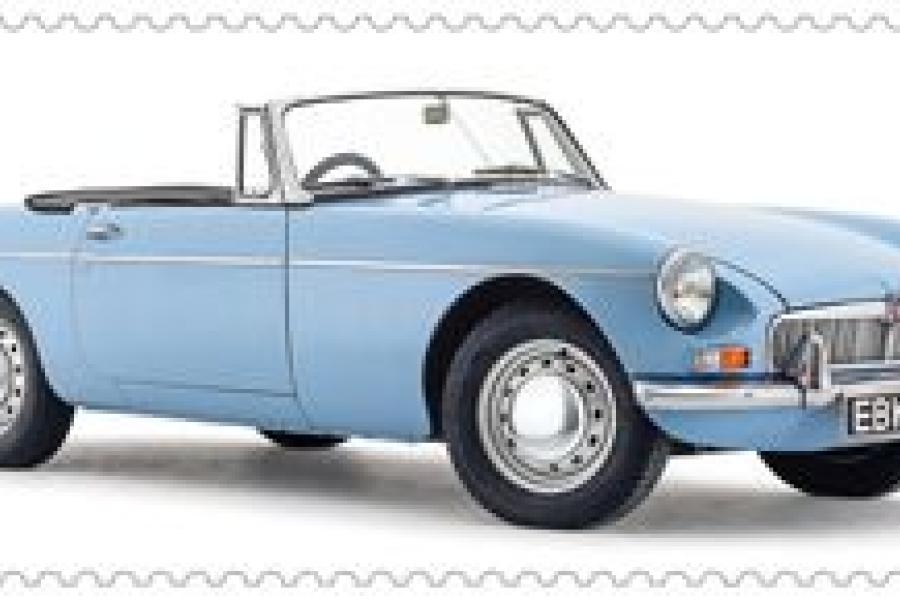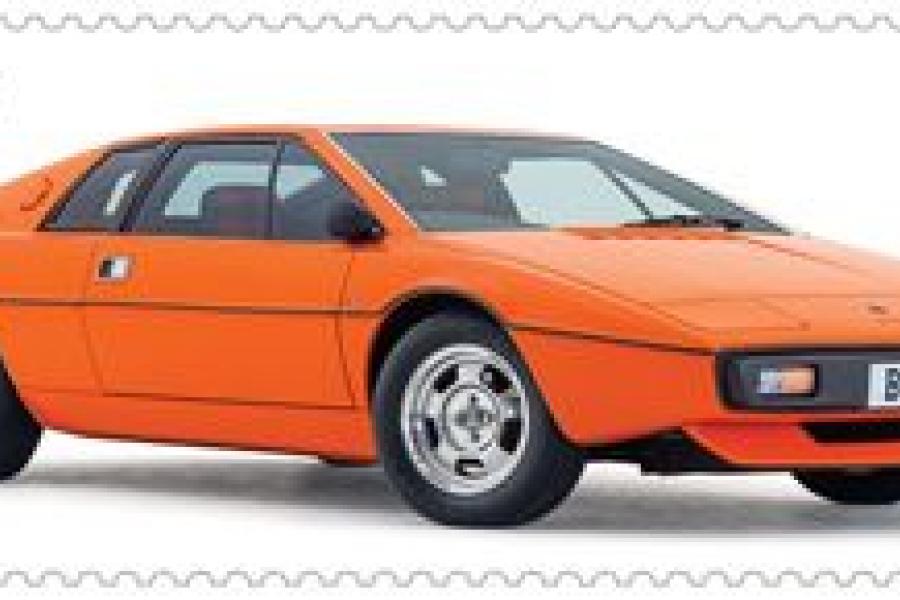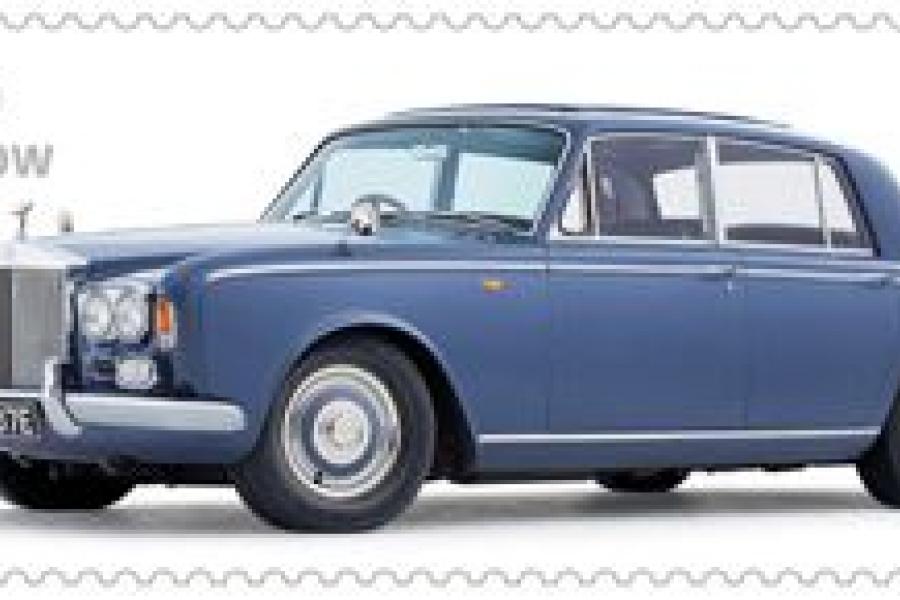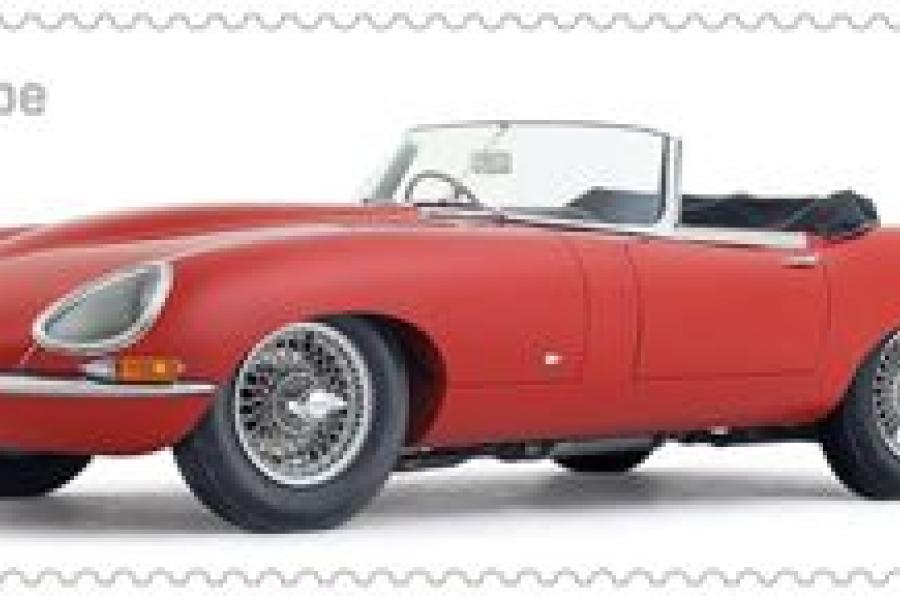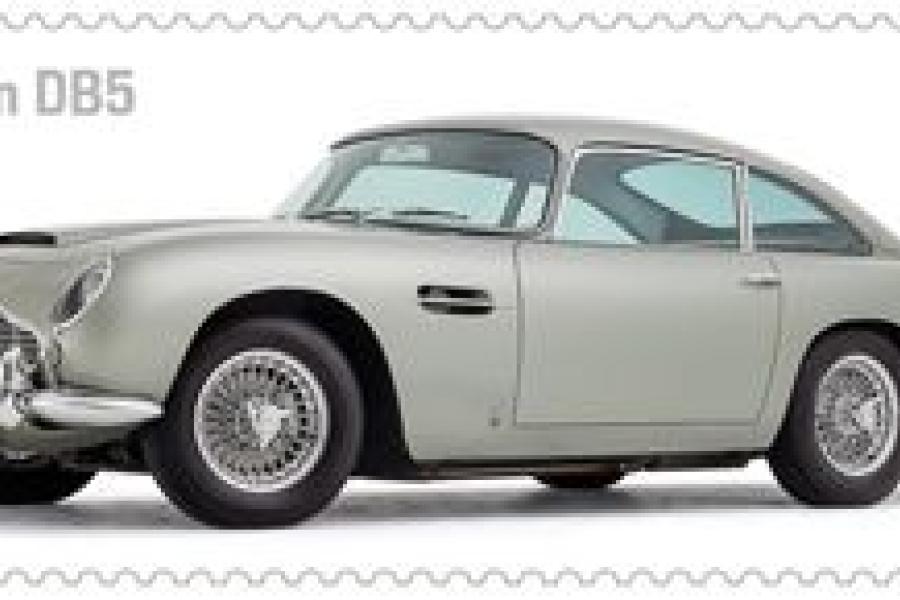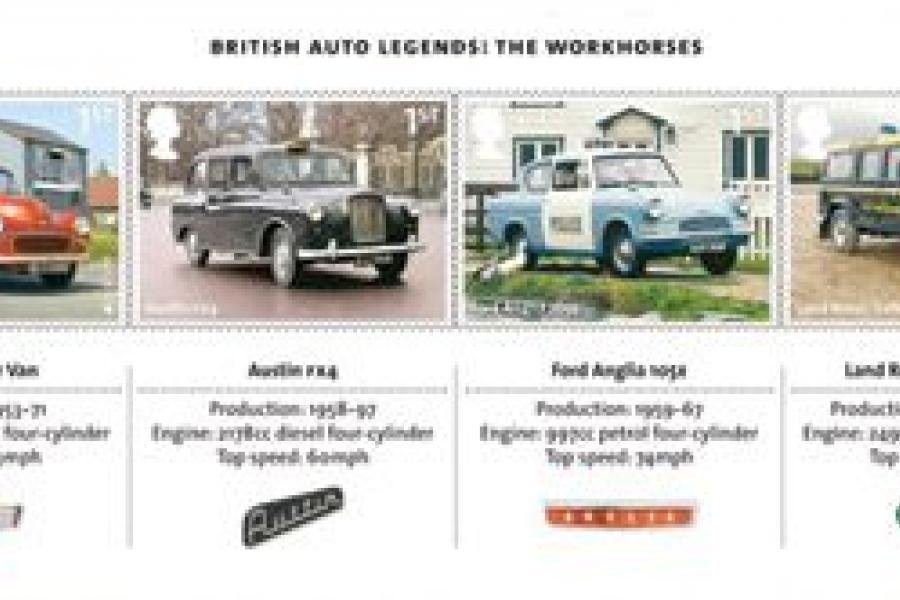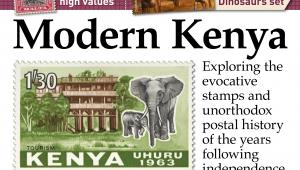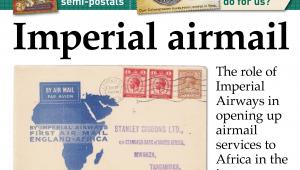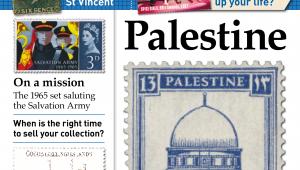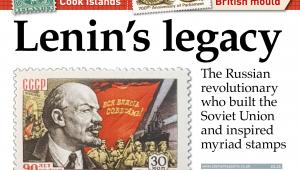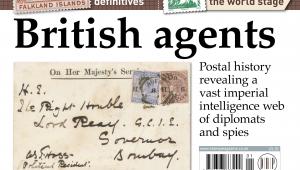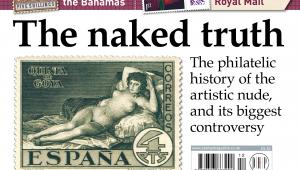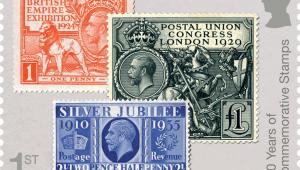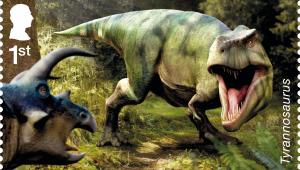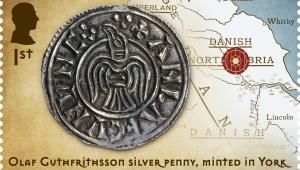British Auto Legends: Classic cars and working vehicles hit the road

The British Auto Legends issue on August 13 celebrates some of the most stylish motor vehicles ever manufactured in Britain, and some of the most hard-working.
Timed to celebrate the 150th anniversary of the birth of Sir Henry Royce (the co-founder of Rolls-Royce) and the centenary of Aston Martin, the issue highlights two very different kinds of legendary cars: the ‘thoroughbreds’ of the 1960s and 1970s on a set of six sheet stamps, and the ‘workhorses’ of the public services on a four-stamp miniature sheet.
The images for the sheet stamps were shot in a studio by renowned car photographer James Mann, using specialist lighting to capture the classic lines of the vehicles.
In contrast, the miniature sheet stamps show vehicles at work in a real setting. One of them, illustrating the Morris Minor van in Royal Mail livery, is Britain’s contribution to the Europa theme for 2013, the post van.
The sheet stamps were designed by Why Not Associates, and the miniature sheet by Robert Maude and Sarah Davies. Both were printed in litho by Cartor.
COMMEMORATIVE WORTH The British car industry had much to be proud of, but is this just a thinly-disguised thematic exercise?
QUALITY OF DESIGN 
The thoroughbreds’ contours are shown off to maximum effect; the workhorses are allowed to pale in comparison
WOW FACTOR 
The sheet stamps are sleek and elegant like the cars, and would grace any envelope
1st class Jaguar E-Type 1961
Sleek and beautiful, with advanced monocoque construction and independent rear suspension, the E-Type was also fast, capable of around 150mph with its 3.8-litre straight-six engine. By the time production ended in 1974, more than 70,000 cars had been sold.
A commemorative sheet marking its 50th anniversary was issued in 2011.
1st class Aston Martin DB5 1963
Engrained in popular culture following its starring role in the James Bond film Goldfinger, the DB5 boasted a super-light construction, with aluminium panels fitted over a steel platform. The manufacturers claimed a top speed of 144mph from its 4-litre engine in standard form, or 150mph with the Vantage package. This was an elite car, with little more than 1,000 produced up to 1965.
1st class Rolls-Royce Silver Shadow 1965
The Silver Shadow blended old-fashioned charm with modern technology, with its hydraulic self-levelling suspension adding a smooth ride to its luxurious fit-out. It had the largest production volume of any Rolls-Royce, with more than 40,000 manufactured by 1980, and more than 2,000 revisions incorporated, including an upgrade from 6.2-litre to a 6.7-litre engine.
£1.28 MG MGB 1962
On its introduction in 1962, MG’s B-model sports car quickly became the world’s most popular two-seater roadster. With a lightweight monocoque design and 1.8-litre engine giving it an affordable launch price of around £950, demand exceeded supply. More than 500,000 MGBs of all types were made by 1980, of which the lion’s share was exported to North America.
£1.28 Morgan Plus 8 1968
The Plus 8 might have had traditional coachbuilding, with body panels draped over a timber frame, but it married this with headline-grabbing performance, with its initial 3.5-litre engine giving it a top speed of 125mph. Anyone wishing to purchase one of these two-seater roadsters had to join a waiting list that was several years long, and its popularity was such it remained on sale until 2004.
£1.28 Lotus Esprit 1976
Based on a stretched version of the Europa, the wedge-shaped Esprit had a steel chassis, a fibreglass body and a 2-litre engine. It famously appeared in the James Bond film The Spy Who Loved Me, transforming into a submarine.
Through five redesigns, more than 10,000 cars had been built by the time production ceased in 2004, including special models in the marque’s Formula 1 racing liveries.
MINIATURE SHEET
1st class Morris Minor Van
Launched in 1953, five years after the original saloon, the Morris Minor range of light commercial vehicles proved hugely popular thanks to its ease of use and sizable capacity. The bright red Royal Mail post van in particular became something of an institution, remaining in use until the late 1970s.
1st class Austin FX4
Designed in collaboration with with taxi dealership Mann & Overton and the coachbuilder Carbodies, the iconic ‘black cab’ was introduced in 1958 and remained in construction for 39 years, with production taken over by London Taxis International in later years. Usually diesel-engined, it was instantly recognisable with its backward-opening rear doors.
1st class Ford Anglia 105E
Built by the American-owned company in vast numbers in Britain from 1959, the Anglia 105E was reliable, economical and easy to manoeuvre, and became as popular with the police force as it was with private owners. When the term ‘panda car’ was first coined in the mid-1960s for police vehicles, it referred to a small saloon such as the 105E, with sections of bodywork painted in contrasting colours.
1st class Land Rover Defender 110
In production since 1990, the Defender 110 can trace its ancestry directly back to the original Land Rover of 1948. As a rugged four-wheel-drive off-road vehicle, it has long been favoured by the British Army, by farmers and by emergency services such as the Coastguard, which has adapted it to carry essential life-saving equipment to remote areas.
OTHER PRODUCTS
The presentation pack is written by motoring journalist Richard Heseltine. First day covers and stamp cards are also available.
PRICES
Set of six £5.64
Miniature sheet £2.40
Presentation pack £8.25
Stamp cards £4.95
First day cover (sheet stamps) £7.24
First day cover (miniature sheet) £3.36
First day envelope £0.30
TOTAL £32.41
